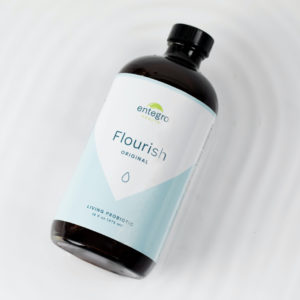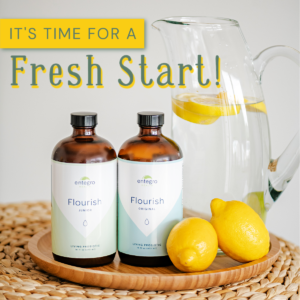Flourish & Synergy
What is Synergy?
Synergy is defined as the cooperation of two or more organizations that produces a combined effect greater than the sum of their separate effects.
Bacteria are Naturally Synergistic.
There’s an old adage in microbiology: no microbe is an island. That is to say, bacteria are not made to live in isolation. Out in nature, many types of bacteria live on a single rock, under a rotting tree trunk, in a coral reef, or even on your skin! Bacteria work together to secure food, serve as protection for survival, and regulate their shared environment.
Astonishingly, bacteria work so well together, they even swap genes! And this is no sisterhood of the traveling pants. This is legit sharing of genetic makeup shared horizontally. Ultimately, this gene swapping is part of what makes bacteria so resistant and adaptable to their surroundings.
To get to know a person, what kind of questions do we ask? Where are you from? What do you do? Where did you grow up? Do you have siblings? Asking questions like these helps give us some context of who someone is and how their life has influenced them to be who they are today. Similarly, to understand a bacterial species, we need to consider the environment they live and grow in, which includes other members of its community.
Mutually Beneficial Relationships in Nature
For people and even animals, it’s easy to see the physical boundaries of an environment or community. Think of the variety of animals that thrive around a watering hole in the desert. Many types of animals come to drink at the oasis and their relationships vary. For example, an oxpecker benefits a rhinoceros by eating mites off its back, while the rhino gives the oxpecker a place to hang out and feast. Therefore, this is a mutually beneficial relationship!
On the other hand, groups of animals can come looking for the same resources. This is a competitive relationship. Lions and cheetahs both come to the oasis looking for their next meal. While others, like zebras and ostriches, help each other to warn of incoming predators.
Similarly, bacteria live in a community. They gather around a similar interest in food, oxygen, and pH level. Even more, bacteria can either compete for the same food source or work together to benefit each other. However, it’s difficult to feather out how exactly the team works. Historically, science has only looked at each bacterium in isolation rather than as a whole community. But this is just one part of the puzzle that makes bacteria difficult to study.
Studying Bacteria
Currently, it is estimated that only about 0.1 – 1% of bacterial cells collected from the environment can grow under laboratory conditions. This is due, in part, to the symbiotic nature of bacteria. Thinking back to the gene-exchanging nature of bacteria, this characteristic alone makes it difficult to grow a bacterium in isolation, especially if a bacterium swaps genes it no longer needs.
Furthermore, bacteria living within communities have access to a greater variety of nutrients than single cells. This is due to their unique nature of working together. Consequently, one bacterium may be able to utilize a food source as is and then produce metabolites and other byproducts that another bacterium may use.
Flourish Probiotics are Uniquely Synergistic!
Commensal growing and living is one of the keys to bacterial success in Flourish. These eleven strains from five different families have grown up together as close family friends. They are better together than they are separate. The beneficial bacteria in Flourish collaborate with each other to create an ecosystem where they thrive together in harmony. This robust broth retains all nutrients, beneficial metabolites, short-chain fatty acids, bioactive peptides, amino acids, enzymes, and minerals produced within.
Many encapsulated probiotic companies grow each strain of bacteria separately. The bacteria are then spun out of the liquid they grew in, losing all of the beneficial byproducts. The probiotic paste left behind is then freeze-dried and ground into powder. Therefore, the first time the different strains will meet are when (if) they wake up in the stomach on their way down to the colon.
Flourish is not just a probiotic; it is a community. It is synergy!
Witten by Lorilyn Van Dyke, Entegro Health
Sources:
Stubbendieck, R. M., Vargas-Bautista, C., & Straight, P. D. (2016). Bacterial Communities: Interactions to Scale. Frontiers in Microbiology, 7. https://doi.org/https://doi.org/10.3389/fmicb.2016.01234
Oxford University Press. (n.d.). Synergy. Definitions. https://www.oxfordlearnersdictionaries.com/us/definition/english/synergy?q=synergy.

 New customers! Get 11% OFF your first Flourish order with Code FRESHSTART11
New customers! Get 11% OFF your first Flourish order with Code FRESHSTART11